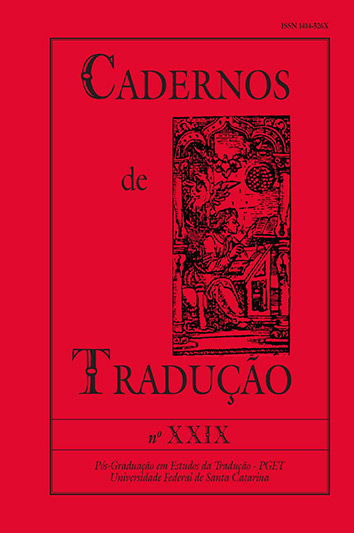On the relevance of script writing basics in audiovisual translation practice and training
DOI:
https://doi.org/10.5007/2175-7968.2012v1n29p145Resumo
Audiovisual texts possess characteristics that clearly differentiate audiovisual translation from both oral and written translation, and prospective screen translators are usually taught about the issues that typically arise in audiovisual translation. This article argues for the development of an interdisciplinary approach that brings together Translation Studies and Film Studies, which would prepare future audiovisual translators to work with the nature and structure of a script in mind, in addition to the study of common and diverse translational aspects. Focusing on film, the article briefly discusses the nature and structure of scripts, and identifies key points in the development and structuring of a plot. These key points and various potential hurdles are illustrated with examples from the films Chinatown and La habitación de Fermat. The second part of this article addresses some implications for teaching audiovisual translation.
Downloads
Publicado
Como Citar
Edição
Seção
Licença
Autores têm autorização para assumir contratos adicionais separadamente, para distribuição não exclusiva da versão do trabalho publicada nesta revista (ex.: publicar em repositório institucional ou como capítulo de livro, com reconhecimento de autoria e publicação inicial nesta revista).





















































